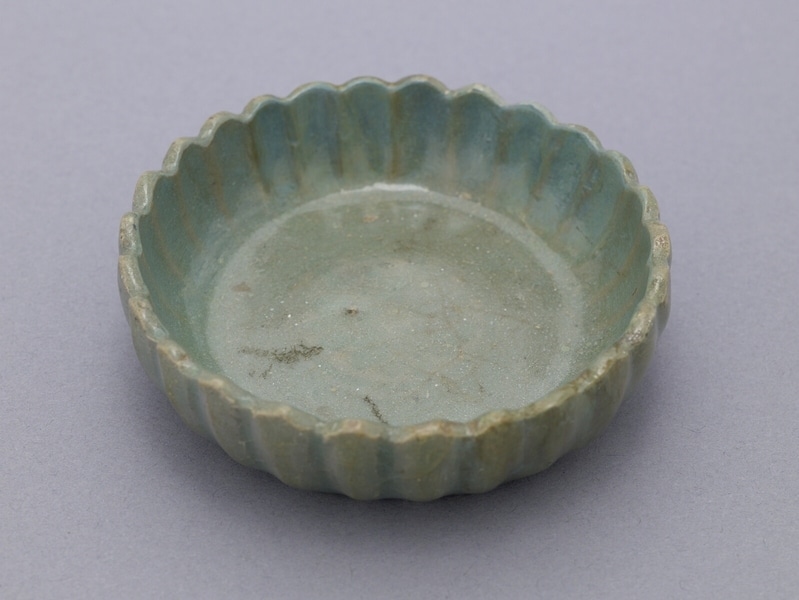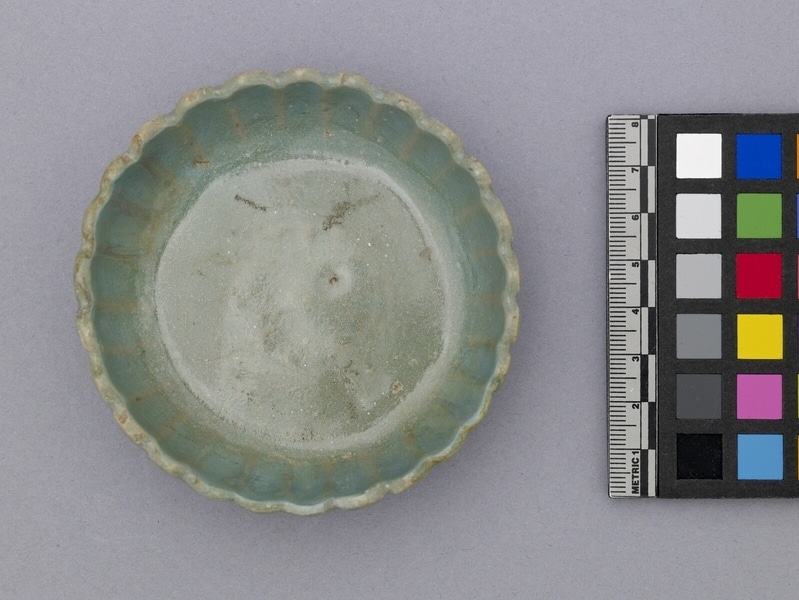Dish Item Number: 816/1 from the MOA: University of British Columbia



Description
Dish (jeopsi 접시; 楪匙), in the shape of petals. Object has steep sides, a scalloped rim, and scalloped sides with concavities around the interior. Traces of three silica stone spurs on base.
History Of Use
This type of flower-shaped dish was produced in Gangjin (강진) and Buan (부안) kilns during the twelfth to fourteenth centuries. Flower-shaped dishes were popular during the Goryeo dynasty (918-1392), and their origin is thought to have come from metal dishes in the Tang dynasty (618-907) of China. All kinds of pottery and porcelain produced during the Goryeo dynasty (고려; 高麗; 918–1392) are called Goryeo dojagi (Goryeo ware; 고려도자기; 高麗陶磁器), and celadon (green-gray glazed ceramic) known as Goryeo cheongja (고려청자; 高麗青磁) was the main kind of ceramics produced during this period in Korea. Celadon originated in China. Goryeo potters learned the techniques from the celadon traditions of the Song dynasty (960–1279). The Buan (부안군) and Gangjin (강진군) regions in Jeolla Province (전라도) became the major production centre by the mid-twentieth century, and Gangjin remains the centre of revivals of Goryeo cheongja and modern celadon production.
Specific Techniques
Thrown, fired, glazed, and molded. This dish was made using a flower-shaped mold and the rim was cut in the shape of petals. There were three ways to make a celadon flower-shaped dish: cutting the edges slightly, pressing from the outside to the inside using a slender tool, or using a flower-shaped mold, like this one. Vessel marked with silica stone spurs likely received special attention during the firing process in the kiln. The spurs were used to support the vessel and minimize its contact with the floor. The use of silica stone spurs (known as 규석 받침 in Korean) was a common practice to produce high-quality celadon. It involved using spurs made of fire clay, sand-mixed clay, or simply covering the bottom of the bowl with sand.
Item History
- Made in Korea between 1100 and 1392
- Owned by Maynards before August 3, 1982
- Received from Fyfe-Smith Memorial Oriental Collection Fund (Funding source) and Maynards (Seller) on August 3, 1982
What
Who
- Culture
- Korean
- Previous Owner
- Maynards
- Received from
- Fyfe-Smith Memorial Oriental Collection Fund (Funding source) and Maynards (Seller)
Where
- Holding Institution
- MOA: University of British Columbia
- Made in
- Korea
When
- Creation Date
- between 1100 and 1392
- Ownership Date
- before August 3, 1982
- Acquisition Date
- on August 3, 1982
Other
- Item Classes
- ceramics
- Condition
- good
- Accession Number
- 0816/0001